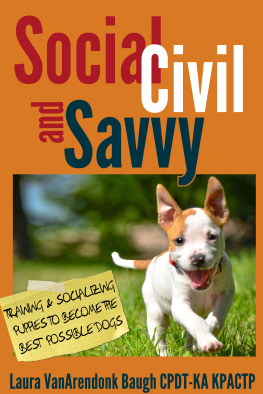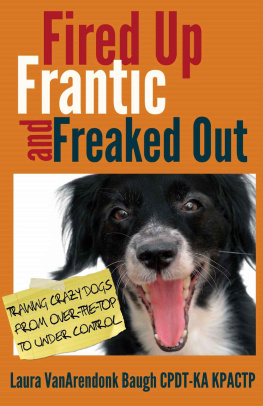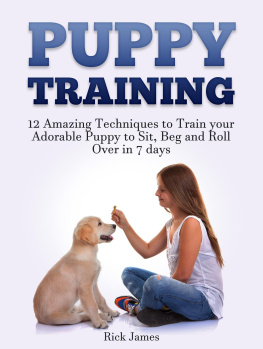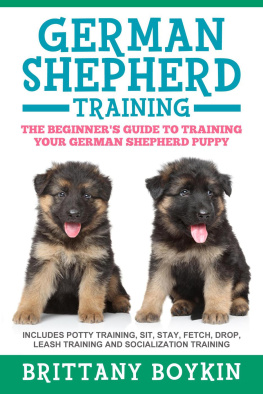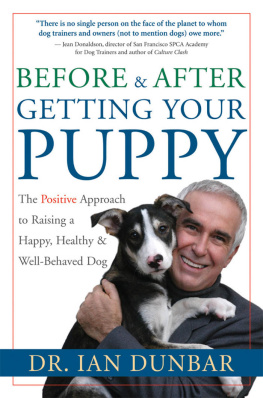www.Aeclipse-Press.com
All rights reserved. No part of this publication may be reproduced, distributed, or transmitted in any form or by any means, including photocopying, recording, or other electronic or mechanical methods, without the prior written permission of the publisher, except in the case of brief quotations embodied in critical reviews and certain other non-commercial uses permitted by copyright law.
All service marks, product names, and trademarks belong to their respective owners.
Although every effort has been made to ensure the information in this book was correct and best practice at press time, the author and publisher do not assume and hereby disclaim any liability to any party for any loss, damage, or disruption caused by errors or omissions, whether such errors or omissions result from negligence, accident, or any other cause. Especially with aggression or anxiety, please consult a qualified professional.

About this book
Whatever else my faults, I raise fearless puppies.
I realized this first when I was walking my guide-dog-in-training around Gen Con, one of the worlds largest geeky conventions. The event has about 65,000 attendees and quarters are crowded, participants often brushing shoulder to shoulder. Amidst the crowd we passed a dancing Big Bird, a man on stilts, a mobile and conversing Dalek, and a fairly good recreation of Captain Davy Jones from the Pirates of the Caribbean film franchise, complete with an enormous and realistically tentacled squid face. My adolescent dog barely gave any of them a glance. (If you want a service dog prepared for anything, I maintain, have them raised by costumers and cosplayers.)
Last year, I brought home a fourteen-foot Velociraptor puppet. Cupcake (yes, she goes by Cupcake) is a realistic dinosaur, with blinking eyes, articulated movement, and a catalog of recorded roars, barks, grunts, and chirps. Undmiel, my adolescent Doberman, walked boldly up to this new arrival and sniffed her briefly on the nose before deciding shed rather chew on an old bone while we worked. Penny, the above-mentioned guide candidate, did not even bother to sniff Cupcakeshe simply walked up and flopped next to her, using her as shade.
Its not that Cupcake isnt a scary beast. Shes startled a number of people, and while puppeteering her at a fundraising event I heard a terrified alarm bark and froze, knowing someones service dog had just been horribly disrupted. To be fair, even the most thorough service dog training program may not prepare a dog for encounters with long-extinct enormous beasts.
But to prepare our dogs, we dont have to cover everything. We just have to teach them how to approach novelty. And my dogs had seen enough to adapt on the fly to even extreme novelty.
I think that a mindful and assessing approach to new situations, or as my colleague Casey Lomonaco calls it curiosity as a life skill, can be taught, and its hugely beneficial.
The amount of positive feedback Ive received on my previous training book Fired Up, Frantic, and Freaked Out has just been astounding to me. People have reported great successes working with their pets, and a few confessed to adapting the same management techniques for use on themselves to stay calm and focused in uncomfortable situations (because good training techniques apply to all species). I couldnt be more pleased and grateful.
But as a trainer, I know we cannot be satisfied with merely fixing problems. Problem-solving is great, surebut preventing problems is more efficient, and that should always be Plan A. We should be proactive rather than reactive. So that is where this book comes in.
Most of us know that socialization is critical in a young dogs life, both to equip them to live safely and happily in a human-centric world and to prepare them for training, whether that be for manners, a competition career, or more serious work, perhaps as a service or detection dog. While word has certainly gotten around that socialization is important, theres still a popular disconnect over what it is exactly and how best to go about it.
I used to get a lot of calls from potential clients wanting a group training class because they heard socialization was important and that seemed the best way to go about it. When I would explain that an hour-long class a week was not really going to address their socialization needs, there was a lot of confusion. Wasnt that the whole point of a puppy class?
Many of the most egregious mistakes are made by those with the best of intentions who were given bad advice. Its both heart-breaking and all too common for a trainer to be called to work with a fearful or aggressive dog and discover that the problem was inadvertently created by a well-intentioned owner trying to do the right thing but acting upon poor advice. This is unfair to both dog and owner, and it can be prevented through making good information available and accessible.
This is not a puppy training book, not in the sense of teaching manners and basic exercises. My goal in this book is not to offer a comprehensive view of the science of socialization, but to provide a practical guide to those who want to give their dogswhether chosen as working dogs or petsthe best start at understanding our world and how to function happily and productively in it.
There are some fantastic puppy programs now available which focus on socialization, with lots of field trips and assigned homework. While it would be ideal for every new puppy owner to have a Puppy Start Right course around the corner, thats unfortunately not the case (yet!), and most of us have to work on our own. This book is intended to fill the gap where a stellar socialization program isnt readily available as a package, allowing you to create and customize your own.
Happy training!
[1] www.PuppyStartRight.com
Chapter 1: Socialization Is ImportantWhatever It Is.
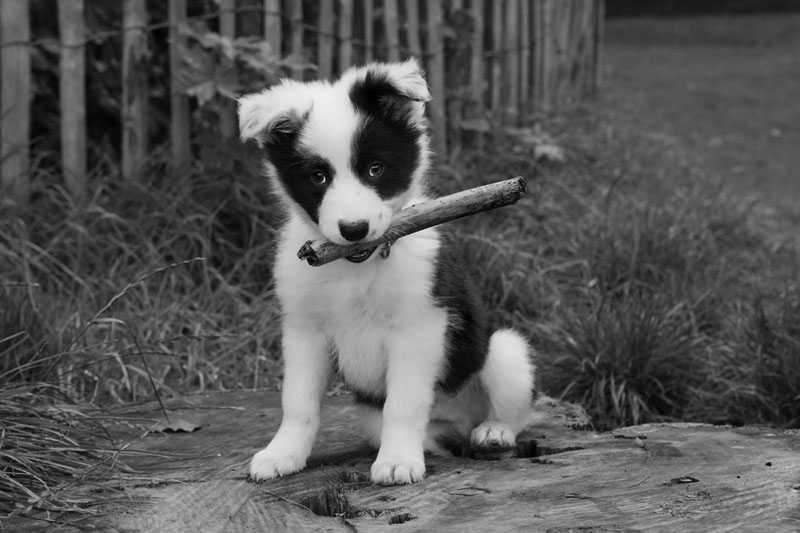
How could this cute face grow up to be trouble?
Socialization is important.
Ask any new puppy owner, trainer, or veterinarian, and youll hear exactly that. Socialization is important.
But when you ask what socialization is, youll get a variety of different answers.
- Socialization is meeting different people and dogs.
- Socialization is getting used to things.
- Socialization is attending a puppy class.
- Socialization is meeting kids.
- Socialization is learning how to get along in a human world.
While none of these is technically incorrect as far as they go, they also do not offer pet owners a working definition of what socialization actually is. Theyre all paths toward socialization, but they are not socialization. And if we want to use socialization as a defense against a whole array of behavior problems in the futureas we shouldwe should probably know what it is, how to accomplish it, and the benefits we expect to derive from it.

